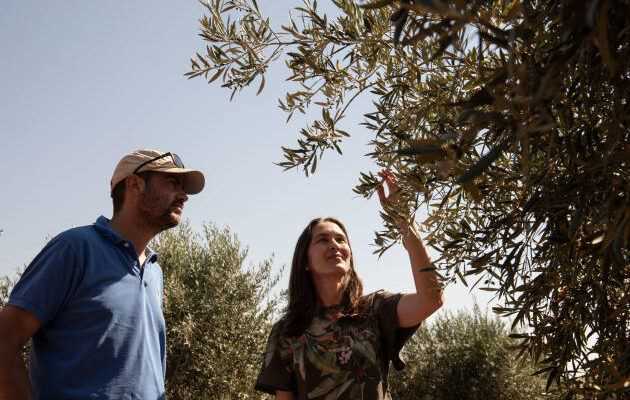Reportage“The golden drops of the olive tree” (3/6). For a long time, the country was content to be the world’s largest producer. Today, some areas, such as Casas de Hualdo, rely on the high end.
At the wheel of his 4 × 4, José Antonio Peche takes a bumpy track, goes along a plantation of green pistachio trees, fields of alfalfa and rapeseed, crosses a herd of Manchega sheep before climbing wide hills covered with olive trees . Below stretch the arid plains of Castile where the waters of the Tagus meander. Arrived on the farm, this 48-year-old agricultural engineer, director of the Casas de Hualdo estate, contemplates the trees on which small, very sharp olives have sprouted, a local variety called cornicabra. Not a little proud of the work accomplished in twenty years.
“At the beginning of the 2000s, in the village, the farmers watched us do it, laughing, as if to say: ‘Hey, here they are, the smart ones'”, Mr. Peche remembers, eyes narrowed, a smile on his sun-tanned face. When we asked them to open the cooperative’s mill from October, to squeeze the still green fruits, they raised their arms to heaven, telling us that before January, when the olives reached the maximum of material. fat, it was not profitable. Except that we are not looking for yield, but for quality. “
Located in the small town of Carpio de Tajo, in the province of Toledo, less than 100 kilometers from Madrid, Casas de Hualdo has won its bet. With its 300,000 olive trees, planted between 1996 and 1999 on a land of 4,000 hectares, including 700 olive groves, the estate no longer has the international awards won by its extra virgin olive oils, regularly ranked among the best in the world. by the Italian reference guide Flos Olei.
“The terroir is privileged, the climate, with very hot summers and cold winters, conducive to the cultivation of olive trees, and we work to create high-end oils, with a complex, robust flavor, which release aromas. artichoke, tomato, mint, green almond “, details the oleologist of the operation, Ignacio Segura.
Rough terroir
Four varieties of olive trees are scattered around the estate. Arbequina (40% of the plantation) gives a light, fruity, very fragrant oil. The picual (40%), the most common in Spain, is subtle, with a slight bitterness and complex notes of green leaves, spinach and spices. As for the cornicabra (15%), the native olive tree, with a robust, spicy and bitter taste, which, when well controlled, gives a particular aroma to the PDO olive oil from the Toledo mountains, it best represents the terroir. , arid, harsh and intense. A few trees of the manzanilla variety (5%) complete the assemblages of the special reserves.
You have 68.02% of this article to read. The rest is for subscribers only.
